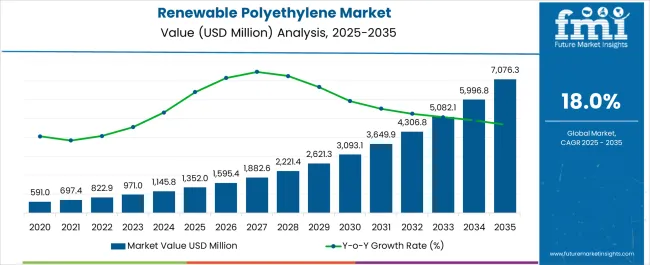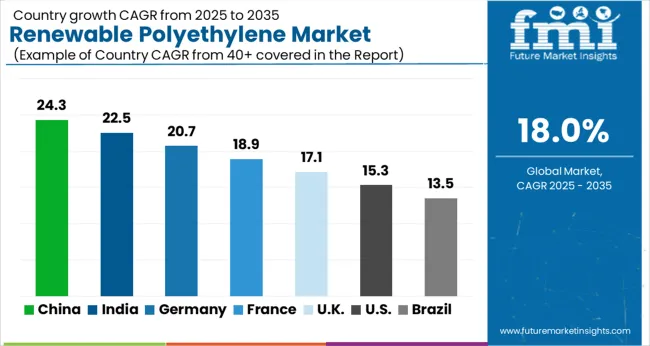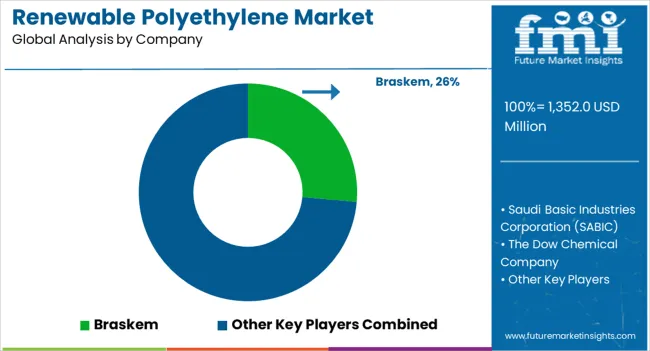The 3D Neuroscience Market is estimated to be valued at USD 36.6 billion in 2025 and is projected to reach USD 53.2 billion by 2035, registering a compound annual growth rate (CAGR) of 3.8% over the forecast period.
Production facilities face unique challenges related to precision instrumentation manufacturing for brain imaging systems, neuro-microscopy equipment, and electrophysiology devices. Quality assurance departments must navigate testing protocols that ensure both technical performance standards and compliance with medical device regulations that vary significantly across regions. Equipment calibration requires specialized expertise in neuroscience applications, creating ongoing tension between production efficiency targets and technical accuracy requirements.
Supply chain dynamics involve complex sourcing relationships for specialized components including high-resolution imaging sensors, precision electrodes, and advanced computational hardware. Procurement teams manage relationships with niche suppliers who often serve both academic research institutions and commercial manufacturers, creating competing priorities for limited capacity. Lead times for specialized neuroscience instrumentation components can extend beyond standard industrial equipment timelines, affecting production planning and inventory management strategies.
Regulatory compliance departments navigate evolving frameworks for neurotechnology oversight that differ substantially across jurisdictions. European Union medical device regulations classify certain brain stimulation technologies under high-risk categories, requiring extensive testing and documentation. These regulatory requirements create bottlenecks in product development timelines while increasing compliance costs that affect pricing strategies and market competitiveness.
The integration of artificial intelligence and machine learning capabilities into neuroscience instrumentation creates additional operational challenges. Software development teams must coordinate with hardware engineering while ensuring algorithmic transparency and validation requirements are met. Data processing capabilities require substantial computational infrastructure, creating ongoing operational expenses and technical maintenance requirements.
International expansion faces regulatory complexity where individual countries maintain different standards for neurotechnology research and clinical applications. Sales teams must coordinate with regulatory affairs departments to ensure product configurations meet local requirements, often requiring different software versions or hardware specifications for different markets. These variations affect manufacturing complexity and inventory management across global operations.
Supply chain risk management becomes critical when serving research institutions and clinical facilities that require consistent equipment availability for ongoing studies or patient care. Facilities managers must balance inventory costs with the operational risks associated with equipment downtime that could affect research timelines or clinical operations. Service and maintenance operations require specialized technical expertise that may not be readily available in all geographic markets.
Financial operations manage cash flow challenges associated with long product development cycles and regulatory approval processes that can extend across multiple years. Revenue recognition becomes complex when products require regulatory approval in different markets, affecting financial planning and investor communications. Research and development expenses require careful allocation across multiple product lines with different technical and regulatory risk profiles.

| Metric | Value |
|---|---|
| 3D Neuroscience Market Estimated Value in (2025 E) | USD 36.6 billion |
| 3D Neuroscience Market Forecast Value in (2035 F) | USD 53.2 billion |
| Forecast CAGR (2025 to 2035) | 3.8% |
The 3D neuroscience market is expanding rapidly as advancements in imaging and computational technologies transform the understanding of brain structure and function. Increasing prevalence of neurological disorders and the growing need for early diagnosis and precise treatment planning are fueling demand for advanced neuroscience tools.
Significant investments are being directed toward innovations in brain mapping, high resolution imaging, and simulation platforms, which are enabling more accurate visualization of neural activity. Integration of artificial intelligence and machine learning in imaging technologies is further enhancing research outcomes and clinical efficiency.
Hospitals and research institutions are increasingly adopting these solutions to accelerate translational research and improve patient outcomes. With rising collaborations between academia, healthcare providers, and technology companies, the market outlook remains positive, underpinned by a strong push for personalized medicine and neuroscience driven therapies.
The brain imaging technology segment is projected to contribute 48.60% of total market revenue by 2025 within the technology category, making it the leading segment. This dominance is driven by its ability to deliver precise structural and functional insights into the brain, supporting both research and clinical applications.
Growing adoption in neurological disease diagnosis, surgical planning, and cognitive research has reinforced its position. Furthermore, continuous improvements in imaging resolution, non invasive modalities, and integration with computational tools are enhancing diagnostic accuracy.
As a result, brain imaging technology continues to represent the cornerstone of 3D neuroscience solutions.
The instruments and consumables segment is expected to hold 57.30% of total revenue by 2025 under the component category, positioning it as the most prominent segment. This growth is supported by recurring demand for consumables along with the high value of advanced instruments used in imaging and electrophysiology studies.
Hospitals, research laboratories, and academic centers rely on these products for consistent workflow, maintenance, and operational efficiency.
The ongoing need for consumable replacements combined with adoption of advanced systems has sustained revenue generation, securing its leadership within the component segment.
The instruments and consumables segment is expected to hold 57.30% of total revenue by 2025 under the component category, positioning it as the most prominent segment. This growth is supported by recurring demand for consumables along with the high value of advanced instruments used in imaging and electrophysiology studies.
Hospitals, research laboratories, and academic centers rely on these products for consistent workflow, maintenance, and operational efficiency.
The ongoing need for consumable replacements combined with adoption of advanced systems has sustained revenue generation, securing its leadership within the component segment.
The revolutionary change in technology has led to a vast improvement in various medical fields. Neuroscience among them is one of the most prominent to witness drastic improvement due to constantly changing technology. High-quality intra-operative systems and 3D printing devices have resulted in improving the quality and safety of neurosurgery.
Global 3D neuroscience can be divided based on brain imaging, neuro-microscopy, electrophysiology, and neuro proteomic analysis. The 3D neuroscience market is expected to grow at a rapid rate in the forecast period due to the increasing prevalence of neurological disorders. Brain imaging is expected to contribute a large no. of market share in the forecast period.
The impact of COVID-19 on the 3D neuroscience market has started to be felt. The breakout of this disease led to lockdowns across the globe which has slowed down the growth of many markets 3D neuroscience market is no different. However, the market is expected to catch up and grow rapidly in the forecast years.
The rising disease burden of neurological disorders such as cerebral stroke, Alzheimer’s disease, epilepsy, etc. has increased the demand for neurological advancement.
Therefore, it may act as one of the leading drivers of 3D neuroscience market. Advancement in the field of neuroscience and neuro-technology is also expected to drive the growth of 3D neuroscience market. Increasing research and development expenditure and government funding may also contribute towards the growth of the market. However, the high cost of neurological devices may limit the growth of 3D neuroscience market.
The global market for 3D neuroscience market is estimated to experience significant growth during the forecast period due to increasing neurological disorders. Based on technology, the global 3D neuroscience market is divided into brain imaging, neuro-microscopy, electrophysiology, and neuroproteomics analysis.
Brain imaging is expected to constitute a major market share in the 3D neuroscience market due to the increasing prevalence of neurological disorders and tumors in the brain that may further lead to cancer. However, the other segments may also generate a large amount of revenue.
Based on components the 3D neuroscience market may be divided into instruments and consumables and software and services. Software and services are expected to generate huge revenue due to the change in technology which will project precise diagnosis.

Geographically, the 3D neuroscience market is segmented into seven regions viz. South Asia, East Asia, Europe, Latin America, North America, Oceania, and Middle East, and Africa. North America is expected to account for the largest share of the 3D neuroscience market due to the increasing prevalence of stroke.
According to the centers for disease control and prevention (CDC), about 140,000 American deaths result from stroke each year, which is 1 out of 20 deaths. Europe is expected to have the second largest market for the global 3D neuroscience market due to increasing neuroscience studies and acceptance of diagnosis treatment.
However, East Asia is expected to observe substantial growth in the 3D neuroscience market due to the availability of funds for research and development. On the other hand, South Asia is anticipated to experience fastest growth in the 3D neuroscience market as a result of the rising incidence of CNS disorders in developing countries.
India and China are expected to be major contributors to the 3D neuroscience market in South Asia as these countries comprise a large no. of geriatric population.
Developing medical infrastructure and increasing awareness of neurological disorders may lead to steady growth in Latin America. In the Middle East and Africa, market growth is expected to be limited due to slow economic growth, underdeveloped infrastructure, and lower access to technological advancement.

The 3D Neuroscience Market is expanding rapidly, driven by advancements in neuroimaging, optogenetics, and 3D cell culture technologies that enable deeper insights into brain structure and function. 3D neuroscience integrates high-resolution imaging, neural mapping, and 3D modeling tools to study neural activity, brain disorders, and drug responses in greater detail than traditional 2D systems. The market’s growth is being fueled by the rising prevalence of neurological diseases, growing investments in brain research initiatives, and increasing adoption of advanced imaging and data analysis tools in both academic and clinical research.
Leading innovators such as GE Healthcare and Siemens Healthineers AG dominate the neuroimaging segment with state-of-the-art MRI, CT, and PET systems optimized for high-resolution 3D brain mapping. These companies are integrating AI-driven analytics and multimodal imaging to enhance diagnosis of neurodegenerative and psychiatric conditions. Doric Lenses Inc. and Laserglow Technologies are key players in the optogenetics and photonics domain, providing advanced illumination and fiber-optic systems that enable precise neuronal stimulation and real-time 3D visualization of brain activity.
Mightex Systems and Kendall Research Systems Inc. specialize in integrated imaging platforms for in vivo 3D neural observation and behavioral monitoring, supporting preclinical neuroscience studies. NeuroNexus Technologies Inc. contributes with high-density microelectrode arrays that enable simultaneous 3D electrophysiological recordings. Prixmatic Ltd. and Noldus Information Technology BV are advancing behavioral and neural interface analysis tools that merge spatial imaging with behavioral metrics. Bioserve GmbH supports translational neuroscience through 3D brain tissue culture systems and biomaterial scaffolds for regenerative studies.
| Item | Value |
|---|---|
| Quantitative Units | USD 36.6 Billion |
| Technology | Brain Imaging, Neuro-Microscopy, Electrophysiology, Neuroproteomic Analysis |
| Component | Instruments & Consumables, Software & Services |
| End User | Hospitals, Diagnostic Laboratories, Research & Academic Institutes |
| Regions Covered | North America, Europe, Asia-Pacific, Latin America, Middle East & Africa |
| Country Covered | United States, Canada, Germany, France, United Kingdom, China, India, Japan, South Korea, Brazil |
| Key Companies Profiled |
Doric Lenses Inc., GE Healthcare, Siemens Healthineers AG, Laserglow Technologies, Mightex Systems, Kendall Research Systems Inc., NeuroNexus Technologies Inc., Prixmatic Ltd., Noldus Information Technology BV, Bioserve GmbH |
| Additional Attributes | Dollar sales by technology type and component category; adoption trends in AI-assisted brain imaging, neuro-microscopy, and electrophysiology platforms; rising demand for high-resolution imaging, brain mapping, and real-time simulation tools; sector-specific growth across hospitals, academic, and diagnostic institutions; revenue segmentation between hardware (instruments & consumables) and digital analytics software; integration with AI. |
The global 3d neuroscience market is estimated to be valued at USD 36.6 billion in 2025.
The market size for the 3d neuroscience market is projected to reach USD 53.2 billion by 2035.
The 3d neuroscience market is expected to grow at a 3.8% CAGR between 2025 and 2035.
The key product types in 3d neuroscience market are brain imaging, neuro-microscopy, electrophysiology and neuroproteomic analysis.
In terms of component, instruments and consumables segment to command 57.3% share in the 3d neuroscience market in 2025.






Our Research Products

The "Full Research Suite" delivers actionable market intel, deep dives on markets or technologies, so clients act faster, cut risk, and unlock growth.

The Leaderboard benchmarks and ranks top vendors, classifying them as Established Leaders, Leading Challengers, or Disruptors & Challengers.

Locates where complements amplify value and substitutes erode it, forecasting net impact by horizon

We deliver granular, decision-grade intel: market sizing, 5-year forecasts, pricing, adoption, usage, revenue, and operational KPIs—plus competitor tracking, regulation, and value chains—across 60 countries broadly.

Spot the shifts before they hit your P&L. We track inflection points, adoption curves, pricing moves, and ecosystem plays to show where demand is heading, why it is changing, and what to do next across high-growth markets and disruptive tech

Real-time reads of user behavior. We track shifting priorities, perceptions of today’s and next-gen services, and provider experience, then pace how fast tech moves from trial to adoption, blending buyer, consumer, and channel inputs with social signals (#WhySwitch, #UX).

Partner with our analyst team to build a custom report designed around your business priorities. From analysing market trends to assessing competitors or crafting bespoke datasets, we tailor insights to your needs.
Supplier Intelligence
Discovery & Profiling
Capacity & Footprint
Performance & Risk
Compliance & Governance
Commercial Readiness
Who Supplies Whom
Scorecards & Shortlists
Playbooks & Docs
Category Intelligence
Definition & Scope
Demand & Use Cases
Cost Drivers
Market Structure
Supply Chain Map
Trade & Policy
Operating Norms
Deliverables
Buyer Intelligence
Account Basics
Spend & Scope
Procurement Model
Vendor Requirements
Terms & Policies
Entry Strategy
Pain Points & Triggers
Outputs
Pricing Analysis
Benchmarks
Trends
Should-Cost
Indexation
Landed Cost
Commercial Terms
Deliverables
Brand Analysis
Positioning & Value Prop
Share & Presence
Customer Evidence
Go-to-Market
Digital & Reputation
Compliance & Trust
KPIs & Gaps
Outputs
Full Research Suite comprises of:
Market outlook & trends analysis
Interviews & case studies
Strategic recommendations
Vendor profiles & capabilities analysis
5-year forecasts
8 regions and 60+ country-level data splits
Market segment data splits
12 months of continuous data updates
DELIVERED AS:
PDF EXCEL ONLINE
3D Somatosensory Virtual Fitting Market Size and Share Forecast Outlook 2025 to 2035
3D Imaging Surgical Solution Market Size and Share Forecast Outlook 2025 to 2035
3D Printing Industry Analysis in Middle East Size and Share Forecast Outlook 2025 to 2035
3D Printed Dental Brace Market Size and Share Forecast Outlook 2025 to 2035
3D Reverse Engineering Software Market Forecast and Outlook 2025 to 2035
3D Automatic Optical Inspection Machine Market Size and Share Forecast Outlook 2025 to 2035
3D Ready Organoid Expansion Service Market Size and Share Forecast Outlook 2025 to 2035
3D-Printed Prosthetic Implants Market Size and Share Forecast Outlook 2025 to 2035
3D Printing Ceramics Market Size and Share Forecast Outlook 2025 to 2035
3D NAND Flash Memory Market Size and Share Forecast Outlook 2025 to 2035
3D Printing Metal Market Size and Share Forecast Outlook 2025 to 2035
3D Bioprinted Organ Transplants Market Size and Share Forecast Outlook 2025 to 2035
3D Mapping and Modeling Market Size and Share Forecast Outlook 2025 to 2035
3D Audio Market Size and Share Forecast Outlook 2025 to 2035
3D Printing in Aerospace and Defense Market Analysis - Size, Share, and Forecast Outlook 2025 to 2035
3D Printed Maxillofacial Implants Market Size and Share Forecast Outlook 2025 to 2035
3D Surgical Microscope Systems Market Size and Share Forecast Outlook 2025 to 2035
3D-Printed Personalized Masks Market Size and Share Forecast Outlook 2025 to 2035
3D Printing Market Size and Share Forecast Outlook 2025 to 2035
3D Printed Packaging Market Size and Share Forecast Outlook 2025 to 2035

Thank you!
You will receive an email from our Business Development Manager. Please be sure to check your SPAM/JUNK folder too.
Chat With
MaRIA